Nine 'amazing' Bronze Age figurines found at Orkney dig
- Published
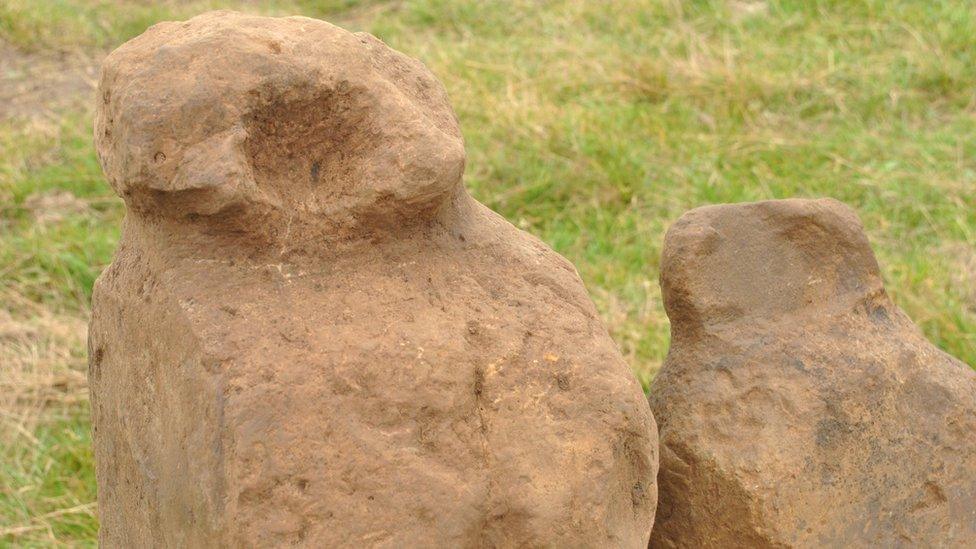
The carvings have all been "pecked" to give them shoulders, a neck and what looks like a head
Archaeologists working at the site of a proposed electricity sub-station in Orkney have found nine "amazing" stone carvings.
The 50cm (20in) tall sculptures have all been worked to give them shoulders, a neck and what looks like a head.
The first has been nicknamed the "Finstown Fella", after the location of the dig. After it was recognised, eight more were found on the site.
Experts believe they date from roughly 2000BC.
Sean Bell, site director for ORCA Archaeology, told BBC Radio Orkney that they had all been worked using a technique known as pecking - chipping away flakes of stone with a pointed metal or stone tool.
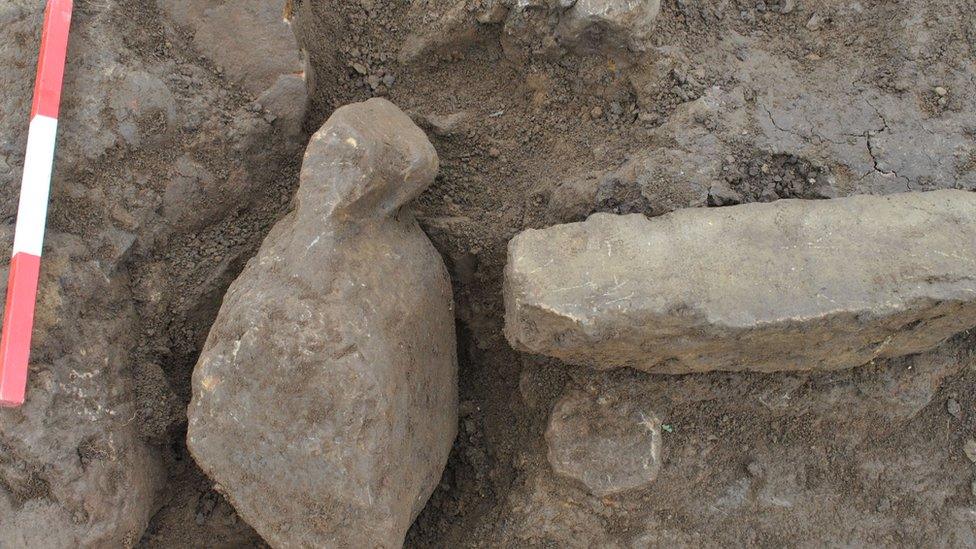
All nine carvings were found in the same structure
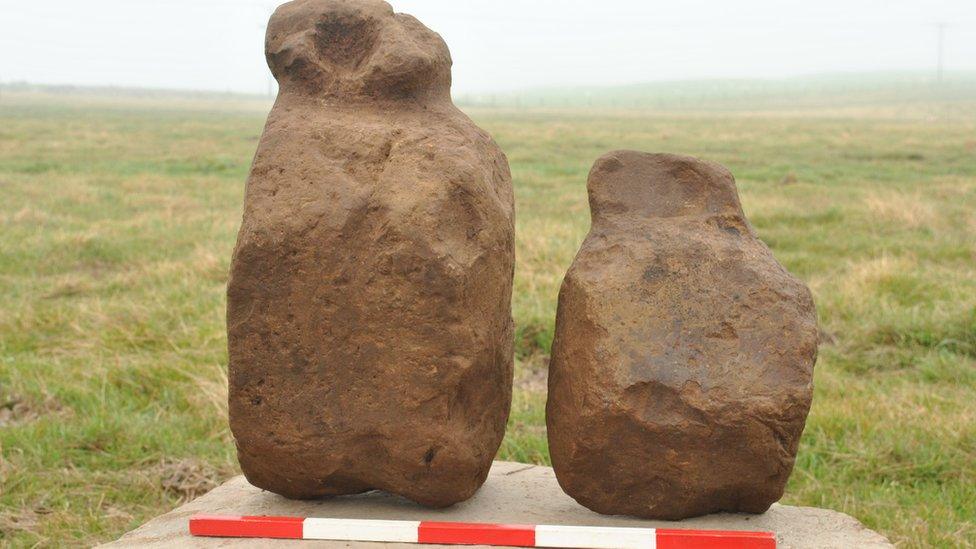
Some of the carvings are rounder - almost pear shaped - while others are flatter
He said the round shape on the largest of the carved stones "definitely looks like a head, and in some lights you think you can see features on it. But whether that's intentional or not we can't say."
Mr Bell said finding nine of the anthropomorphic - or human like - stones in one place is unprecedented.
"Examples have come up, usually as individuals as a result of people ploughing," he added.
"But some of the examples we've got, instead of being rotund and three dimensional, are very flat. And they're similar to some that have come out from the Links of Noltland (on the island of Westray).
"So, even though we're calling them all necked stones, they might not all have the same function. But so little is known about them. That's why this is so important."
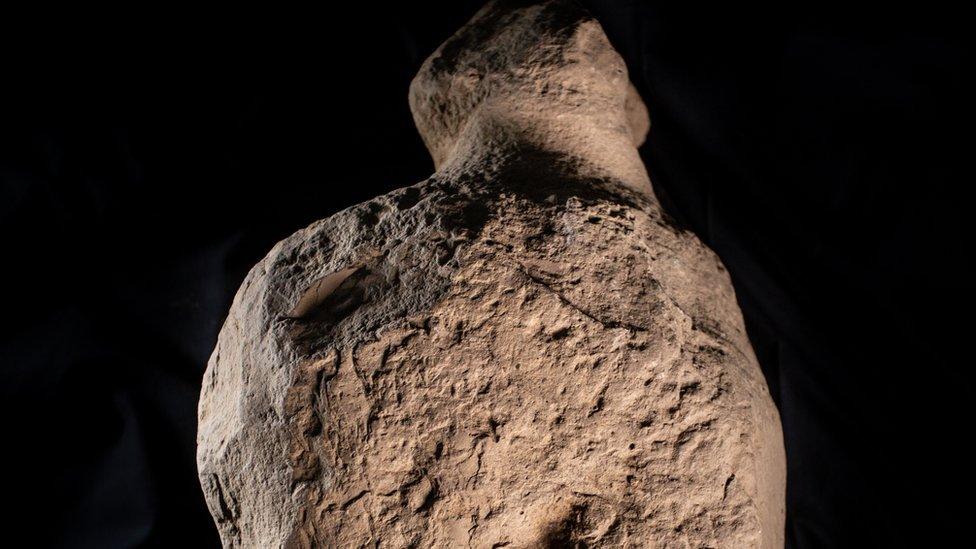
Individual necked stones have been found before, usually after being disturbed by ploughing
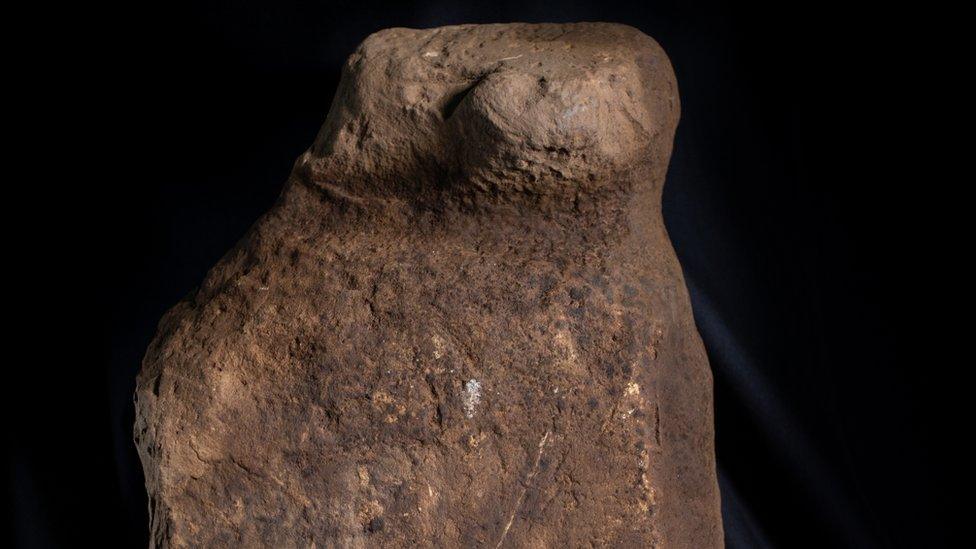
What makes the Orkney find important is that nine examples were found together, in a secure archaeological context
The objects could be deliberate representations of the human form. Or they might have been made for a specific practical purpose. Or, perhaps, both.
"One theory, particularly with the flat ones, is they may be set in the ground, and then the neck is used for a tether. A sort of Neolithic tent peg," Mr Bell said.
"Of course when you talk about anthropomorphic figures, you automatically start thinking of ritual and religion.
"But even a flat one being used to tether something could still be part of that aspect of society."
Sean Bell said the discovery of so many of the stones in one place, and in a secure archaeological context, shines a light on a relatively unknown part of Orcadian pre-history and may help experts to understand more about the objects.
The dig was carried out at Finstown ahead of development at the site by SSEN Transmission.
- Published18 July 2019
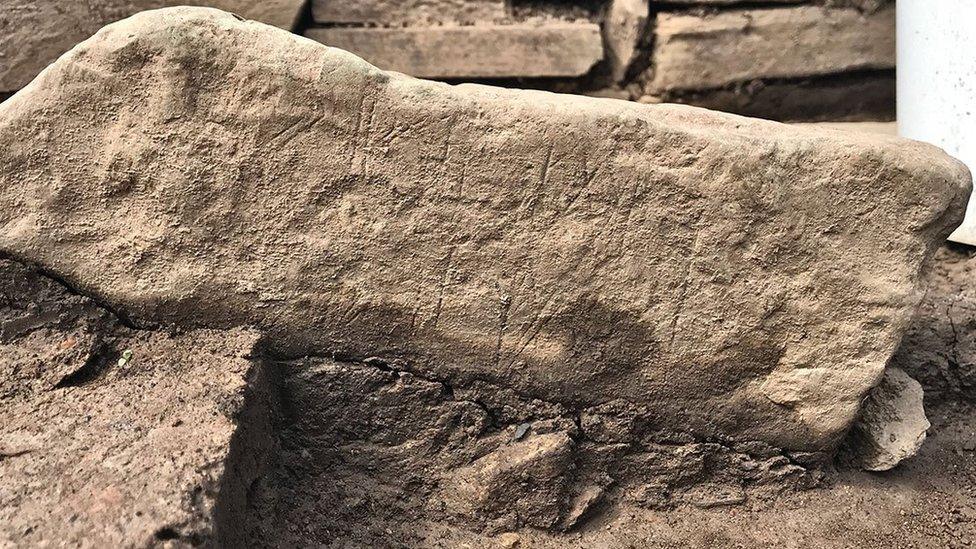
- Published18 July 2010